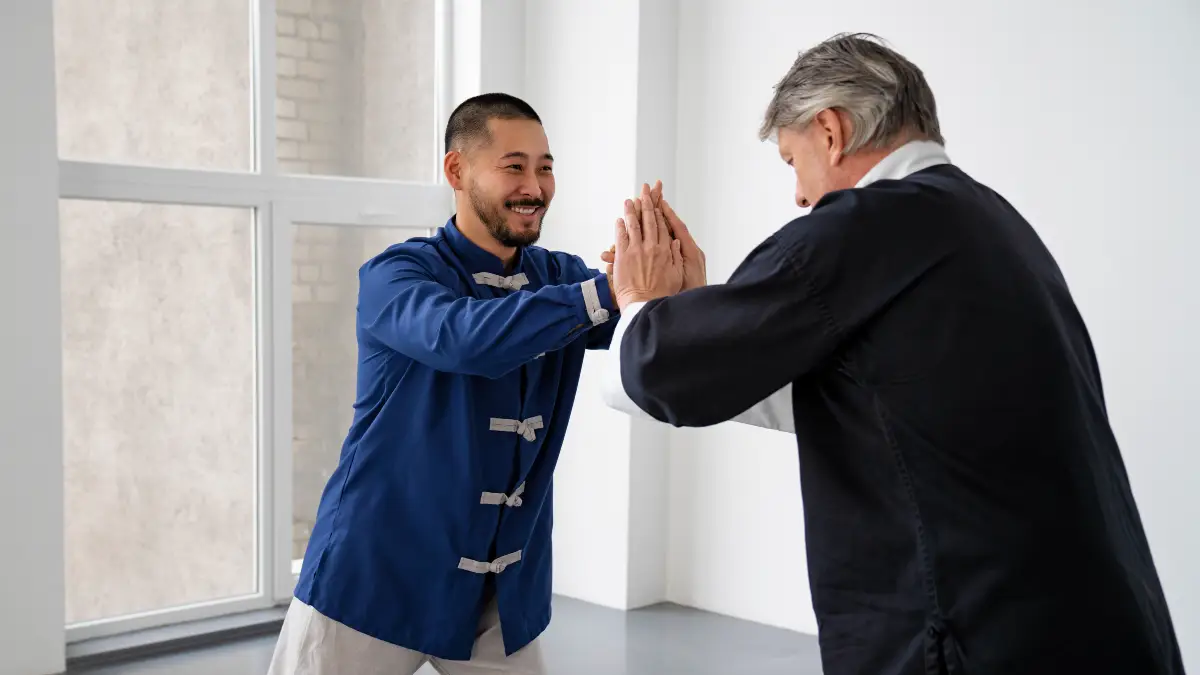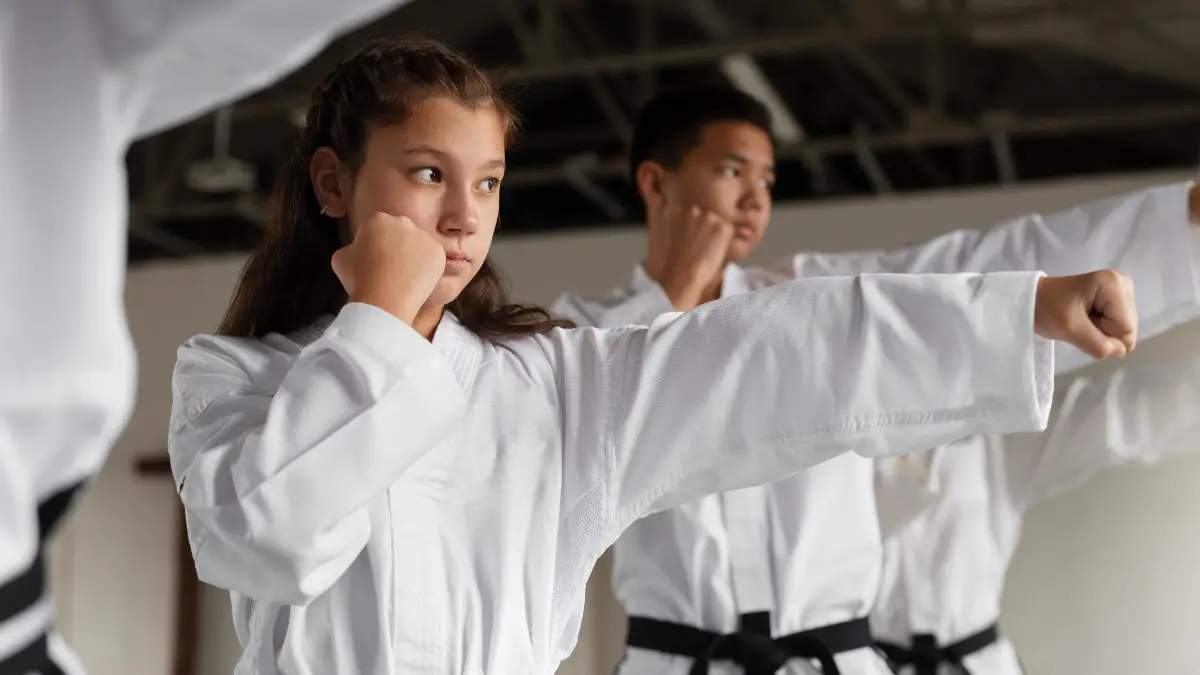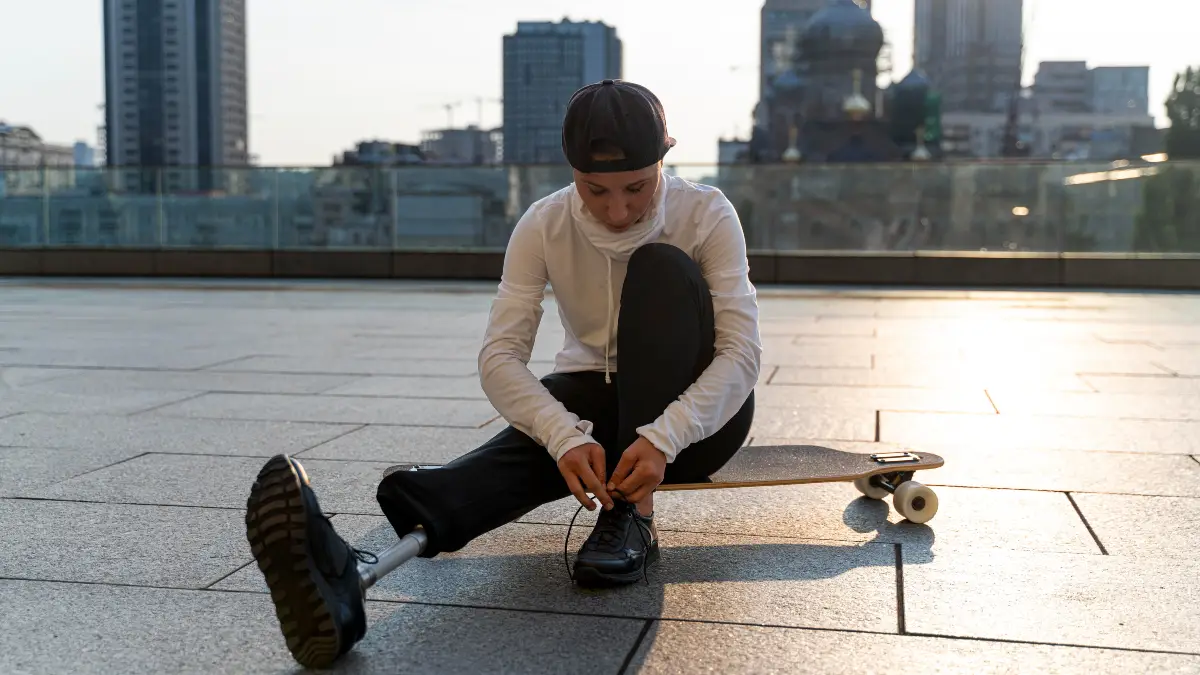Feel helpless against bigger, stronger opponents? You’re not alone. Throughout history, smaller people have faced this threat—until they discovered something remarkable.
Brazilian Jiu-Jitsu and other leverage-based martial arts don’t rely on muscle. They use physics. By applying force at the right points and angles, a 120-pound person can control someone twice their size.
The secret? Joint manipulation, balance disruption, and mechanical advantage. These techniques multiply your effective force 3-10 times without requiring extraordinary strength.
Science confirms what practitioners have known for centuries: when properly applied, leverage truly levels the playing field. Size matters less than you think when you know how to move.
The Science Behind Leverage: How Physics Empowers Smaller Defenders

Ever wonder how a 120-pound person can control someone twice their size? It’s not magic—it’s physics. When you apply a joint lock, you’re using mechanical advantage—the same principle that lets you lift heavy objects with a simple lever.
Torque equals force times the moment arm (the distance from the pivot point). By making your lever arm longer, you need less force to create the same effect. This is why proper technique can multiply your effective force by 3-10 times.
You’re not getting stronger—you’re getting smarter about how you use force. Take an armbar, for example. Research shows this technique creates an 8-10:1 mechanical advantage.
When you use both your legs and hips against an opponent’s single arm, you’re applying force from your strongest body parts against their weaker joint. Your legs are about three times stronger than your arms, and the perpendicular angle maximizes force transfer.
“The leverage principles in martial arts follow basic physics laws,” explains Dr. James Chen, biomechanics researcher. “Joint manipulation works because human joints have fixed ranges of motion regardless of how strong someone is.”
Your elbow doesn’t care if you can bench press 300 pounds—it still bends the same way and has the same breaking point as anyone else’s.
Balance disruption works on similar principles. When you move someone’s center of gravity outside their base of support, they fall. That’s why techniques like foot sweeps require minimal force when timed correctly.
The square-cube law also helps smaller defenders. As body size increases, volume (and weight) grows faster than strength. This means larger people often have less strength relative to their body weight.
Your smaller frame might actually give you better strength-to-weight ratios and more efficient movement. These biomechanical principles aren’t just theory—they’re proven by research.
A study in the Journal of Sports Science and Medicine found that skilled martial artists achieve significantly different trunk rotation velocities and momentum control compared to novices, confirming that proper technique truly does multiply force.
Physics doesn’t care how big you are. It only cares about how you apply force.
Brazilian Jiu-Jitsu: The Gold Standard for Smaller Practitioners

Brazilian Jiu-Jitsu (BJJ) wasn’t created for big, strong athletes. It was developed specifically for smaller people to beat bigger opponents.
Helio Gracie, who stood 5’8″ and weighed just 135 pounds, modified traditional Japanese judo because he was too small and weak to use many techniques effectively.
He created a system based entirely on leverage rather than strength—and it works. With its 9.0/10 effectiveness rating for smaller practitioners, BJJ consistently outperforms other martial arts in real situations.
Why? Because it solves the biggest problem smaller defenders face: what happens when a fight goes to the ground. “Once a fight hits the ground, size advantages shrink dramatically,” explains John Danaher, world-renowned BJJ coach.
“The ground neutralizes the power that comes from someone’s legs—their strongest muscle groups.”
When standing, a 200-pound attacker can generate massive force through their legs. On the ground, that advantage largely disappears.
BJJ also takes advantage of your natural assets as a smaller person. Your lower center of gravity makes you harder to throw and gives you better balance. By controlling key points on your opponent—their head, hips, and limbs—you create a system of levers that overwhelms even much stronger people.
Real-world proof? Look at Mikey Musumeci, five-time world champion at 125 pounds, who regularly trains with and defeats opponents 50+ pounds heavier.
“Size matters, but technique matters more,” Musumeci says. “I don’t try to match strength with strength. I use angles and leverage to make their strength work against them.”
BJJ’s effectiveness comes from its testing ground. Unlike many martial arts, BJJ practitioners spar at 100% effort regularly, so every technique is battle-tested.
The Gracie family proved BJJ works through the early UFC competitions, where Royce Gracie (weighing just 170 pounds) defeated opponents who outweighed him by 50-80 pounds.
For smaller defenders, BJJ offers something precious: a reliable way to control bigger attackers without needing to knock them out. By using chokes and joint locks, you can neutralize threats with minimal risk to yourself.
This isn’t theory. It’s physics applied to fighting, refined over 100 years of real combat testing.
Other Effective Martial Arts That Neutralize Size Advantages

When facing bigger opponents, you have options beyond Brazilian Jiu-Jitsu. Several martial arts use physics and smart technique to help smaller fighters win.
Judo ranks equally with BJJ at 9.0/10 effectiveness for smaller practitioners. Created by Jigoro Kano, judo’s entire philosophy is “maximum efficiency with minimum effort.” This means using an opponent’s weight and momentum against them.
“Being shorter in judo can actually be an advantage,” explains Olympic coach Jim Peterson. “Lower centers of gravity make you harder to throw and give you better leverage for your own techniques.”
Olympic judo divides competitors into seven weight classes for both men and women, but cross-training often happens between divisions. The techniques work across size differences when executed properly.
Wing Chun (8.0/10 effectiveness) was literally created for smaller fighters. Legend has it that a Shaolin nun designed this system specifically so smaller women could defeat larger men. The system excels at close-range combat—exactly where a taller opponent’s reach advantage disappears.
Wing Chun uses:
- Chain punches that overwhelm with speed rather than power
- Centerline theory to protect your vital areas while attacking your opponent’s
- Structure and positioning that doesn’t require raw strength
You’ve seen Wing Chun techniques in action. UFC champions Jon Jones and Tony Ferguson have incorporated these methods into their fighting styles.
Krav Maga scores 7.0/10 for smaller defenders. This Israeli combat system focuses on attacking vulnerable targets that hurt everyone equally, regardless of size—eyes, throat, groin, and knees.
“A 250-pound attacker’s eyes are just as vulnerable as a 150-pound person’s,” notes Krav Maga instructor David Miller. “Size doesn’t protect these targets.”
Krav Maga also teaches immediate counterattacks rather than pure defense, giving smaller fighters the initiative advantage.
Aikido sounds perfect on paper—using an attacker’s energy against them. But in practice, it rates just 3.0-5.0/10 for smaller practitioners against determined attackers.
Why the low rating? Aikido typically:
- Uses compliant training partners who don’t resist realistically
- Lacks intense sparring practice against fully resistant opponents
- Offers limited striking techniques
“Aikido has beautiful principles,” says MMA coach Mark Stevens, “but without testing against full resistance, the techniques remain theoretical rather than practical.”
The verdict? For smaller defenders seeking reliable protection, judo and Wing Chun offer excellent alternatives to BJJ, while Krav Maga provides practical skills with less training time.
Real-World Success Stories: Leverage in Action

These aren’t action movie scenes. These are real people using leverage and technique to defend themselves despite being smaller than their attackers.
The 13-Year-Old vs. Adult Attacker (May 2025)
In Carmel-by-the-Sea, California, a 13-year-old girl walking home from school faced every parent’s nightmare: an adult man attacked her, trying to punch her in the face.
Instead of freezing, she:
- Blocked his punch
- Counter-struck
- Secured a headlock
- Delivered multiple knee strikes
- Executed a throw that broke her attacker’s ankle
With just three years of jiu-jitsu training, she stopped an attack from someone twice her size.
“She did exactly as she was supposed to do,” said Sensei Michael Blackburn from the Carmel Youth Center. “You have to fight in class like you’re going to protect yourself on the street.”
The story went viral, generating over 900,000 likes on TikTok and inspiring families nationwide to consider self-defense training.
The Instinctive Defender (September 2025)
Even more surprising was Sol Vargas Garita, a 25-year-old Costa Rican woman with zero martial arts training. When a man grabbed her handbag containing about $185, something clicked.
“This guy grabs my bag, and I think: ‘He’s not taking it,'” Vargas explained. “I grabbed him, threw him down, and, honestly, yes—I hit him, made him bleed and everything.”
Security footage showed her executing movements remarkably similar to Brazilian jiu-jitsu techniques—a triangle choke, armbar, and full mount position—despite having no formal training.
The Pattern
These aren’t isolated cases. A teenage restaurant worker successfully defended himself using BJJ when attacked by a customer. A college student escaped an attempted assault using a simple wrist lock from aikido.
Law enforcement experts note the common elements in successful defenses:
- Immediate action rather than freezing
- Targeting weak points (joints, balance)
- Using the ground to neutralize size differences
- Maintaining composure during the attack
“What we’re seeing is that leverage-based techniques work even for untrained people in some cases,” explains Detective Sarah Rodriguez, who specializes in assault cases.
“The physics principles are so sound that they can be applied instinctively in high-stress situations.”
These real stories prove that with proper technique, size truly doesn’t always determine who wins a fight.
Five Essential Techniques Every Smaller Defender Should Master

Want to defend yourself against someone bigger? These five techniques consistently work for smaller people in real situations.
1. Armbar from Guard: The Ultimate Equalizer
This technique creates a stunning 6:1 leverage advantage by positioning both your legs and hips against an opponent’s single arm.
How it works:
- From your back, wrap your legs around the attacker’s waist (called “guard”)
- Control one arm and your opponent’s posture
- Swing your hips perpendicular to their body
- Extend your hips while pulling the controlled arm
- Apply pressure at the elbow joint
“The armbar works because everyone’s elbow breaks the same way, regardless of how strong they are,” explains Professor Ricardo Arita, who regularly trains against opponents 30-50 pounds heavier.
The physics: You’re using your strongest body parts (legs and hips) against one of their weakest joints (elbow), while the perpendicular angle maximizes force transfer.
2. Rear Naked Choke: Safe and Effective
World-renowned instructor John Danaher calls this “the safest and most effective finish across all weight classes.”
What makes it work:
- You’re positioned behind your opponent where they can’t strike you
- The “seatbelt control” (one arm over shoulder, one under armpit) prevents escape
- Your legs wrap around their torso, removing their base
- The choke cuts blood flow to the brain, not air to the lungs
- Takes just 8-13 seconds to work regardless of someone’s size
Competition statistics show this submission has the highest success rate among black belts. That’s because it doesn’t rely on strength—it relies on positioning and basic human anatomy.
3. Leg Lock Systems: The Modern Equalizer
Leg locks target the relatively weak ankle and knee joints—vulnerable points even on much larger people.
Key benefits:
- Your weight stays on the ground rather than supporting your opponent
- Positions like single-leg X-guard and 50-50 guard create mechanical advantages
- The “ashi garami” (leg entanglement) positions control movement
- Smaller limbs can effectively control larger ones through proper alignment
“Leg locks have revolutionized how smaller grapplers approach bigger opponents,” says leg lock expert Craig Jones. “They’re the great equalizer in modern grappling.”
4. Judo’s Seoi Nage (Shoulder Throw): Physics in Motion
This technique lets a 150-pound person throw someone 100 pounds heavier by using leverage instead of strength.
The mechanics:
- Enter under your opponent’s center of gravity
- Use their forward momentum against them
- Your body becomes both lever and fulcrum
- Lower your hips below theirs for maximum leverage
- Rotate while lifting with your legs, not arms
The key is timing—attack when your opponent moves forward, using their own weight to help the throw. When executed correctly, you’re not lifting their weight; you’re redirecting it.
5. Butterfly Guard Sweeps: Control Through Imbalance
When you’re on your back facing a standing opponent, butterfly guard sweeps let you reverse positions without using upper body strength.
How to execute:
- Place your feet (hooks) under your opponent’s thighs
- Control their arms to prevent them from posting
- Elevate with your legs while pulling with your arms
- This moves their center of gravity outside their base of support
“I use butterfly guard as my primary position against bigger people,” says Professor Arita. “It lets me use my legs—my strongest muscles—to move them where their size becomes a disadvantage.”
These techniques form the foundation of an effective self-defense system for smaller individuals. They don’t require exceptional strength or athleticism—just proper understanding of leverage and consistent practice


